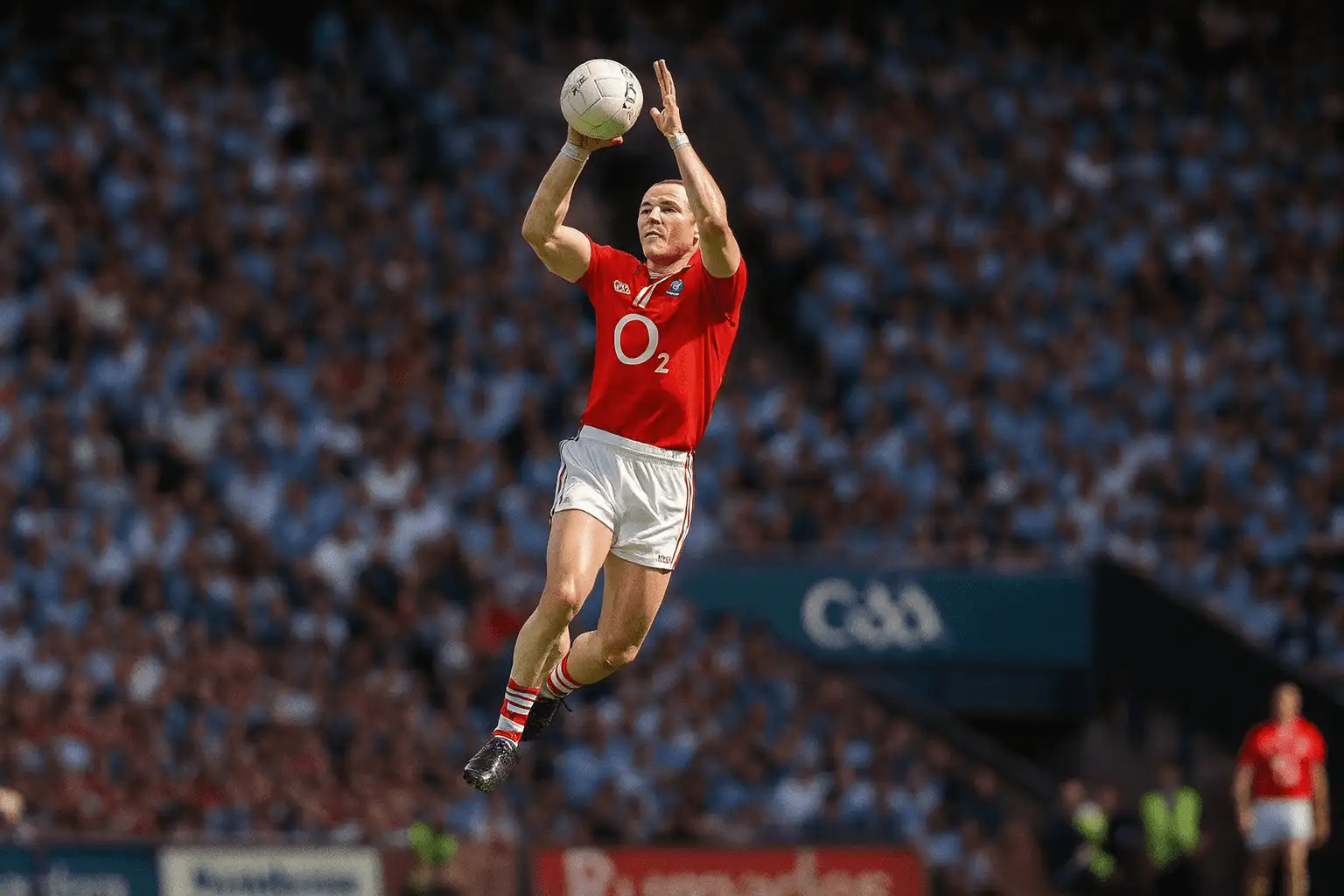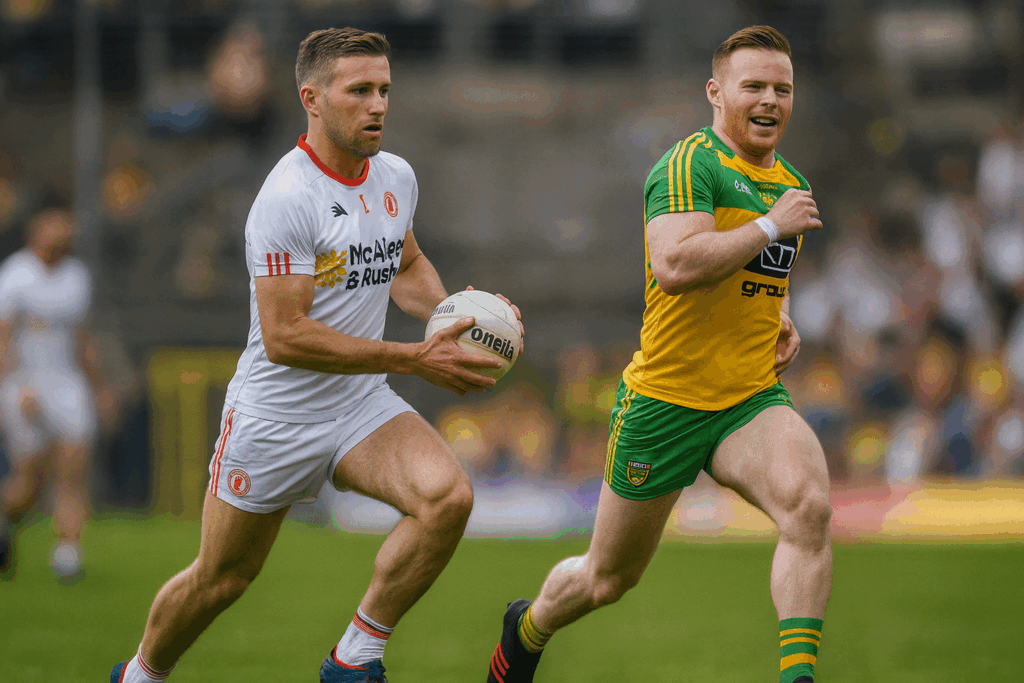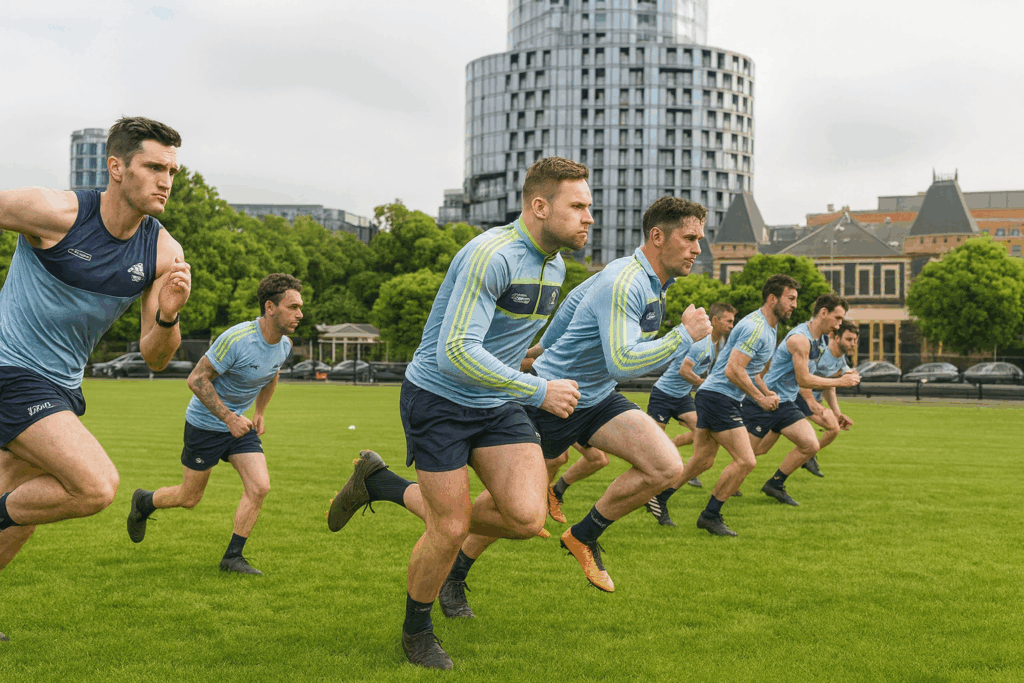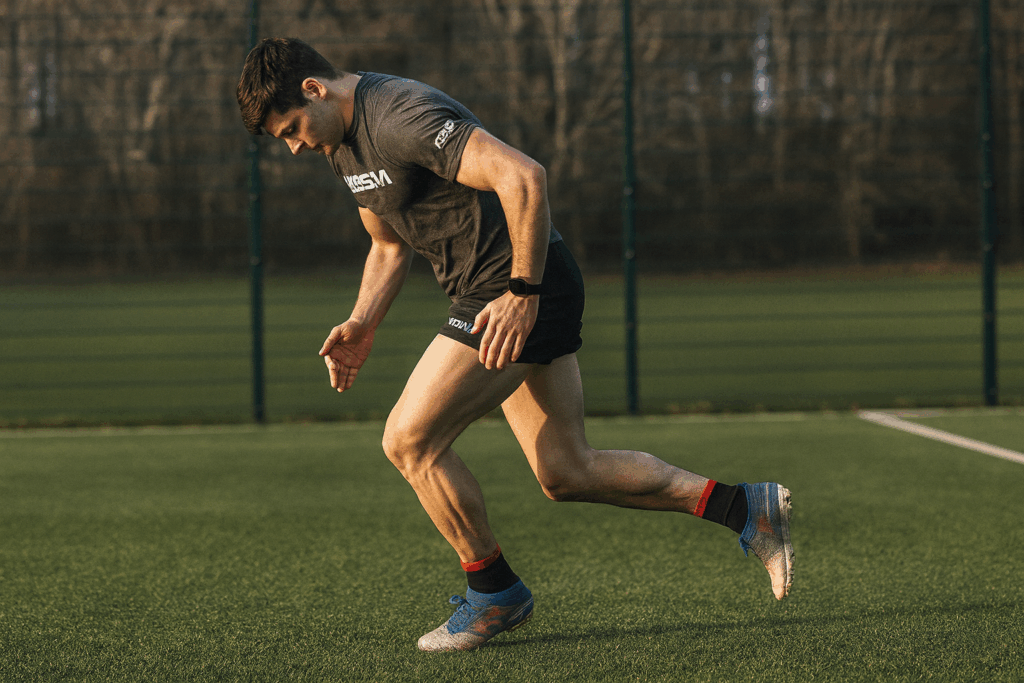Introduction
Plyometric training is a cornerstone of athletic performance, particularly in Gaelic football, hurling, and camogie. By enhancing explosive power, agility, and reactive strength, plyometrics bridge the gap between gym-based strength and the dynamic movements required on the pitch. This guide provides an evidence-based approach to plyometric training for GAA players and coaches, integrating the latest research and practical programming strategies.
By the end of this guide, you will:
- Understand the principles of plyometric training.
- Learn how to incorporate extensive and intensive plyometrics into your program.
- Access sample drills and progressive programs tailored for GAA athletes.
The Benefits of Plyometric Training for GAA
- Explosive Power:
- Improves sprinting, jumping, and tackling.
- Enhanced Reactive Strength:
- Boosts efficiency in transitioning from landing to take-off.
- Injury Prevention:
- Develops joint stiffness and landing mechanics to minimise injury risks.
- Position-Specific Performance:
- Tailors explosiveness and agility to match the demands of each role on the pitch.
Key Concepts in Plyometric Training
Reactive Strength Ratio (RSR)
- RSR measures an athlete’s ability to transition efficiently from eccentric (loading) to concentric (explosive) movement.
- Application: Use RSR assessments to monitor progress and refine training intensity for optimal gains.
- Drill Example: Depth jumps with focus on minimal ground contact time.
Difference Between Intensive and Extensive Plyometrics
- Extensive Plyometrics:
- Focus on volume and endurance.
- Lower intensity with longer ground contact times.
- Examples: Skipping, bounding, lateral hops.
- When to Use: Early in the training cycle to build a foundation.
- Intensive Plyometrics:
- High-intensity drills with short ground contact times.
- Prioritise maximal force production and power.
- Examples: Depth jumps, single-leg bounds, explosive hops.
- When to Use: Later stages of training for peak performance.
Progressive vs Developmental Plyometrics
- Progressive Plyometrics:
- Gradual increase in intensity, volume, or complexity over weeks.
- Designed for long-term adaptation and peak performance.
- Developmental Plyometrics:
- Focus on teaching proper mechanics and fundamental skills.
- Ideal for beginners or athletes returning from injury.
Categorising Plyometrics for GAA
Plyometric exercises can be classified by intensity, movement patterns, and specificity:
| Category | Focus | Examples |
|---|---|---|
| Extensive | Build endurance and joint stiffness | Skipping, bilateral hops, lateral bounds |
| Intensive | Maximal explosiveness and power | Depth jumps, single-leg bounds |
| Specific | Mimic in-game movements | Lateral bounds with reaction drills |
| Landing-Focused | Improve eccentric control and landing safety | Depth landings, controlled drop jumps |
Key Techniques for Effective Plyometrics
Leaping
- Purpose: Build bilateral strength and stability.
- Technique:
- Land softly with knees aligned over toes.
- Use full-foot landings to optimise stability and reduce impact forces.
Bounding
- Purpose: Improve horizontal force production.
- Technique:
- Land with front foot under the body’s centre of mass.
- Maintain a dorsiflexed ankle for efficient ground contact.
Hopping
- Purpose: Enhance single-leg strength and balance.
- Technique:
- Keep the landing leg stacked under the hip and knee.
- Focus on rhythm and minimal ground contact time.
Phased Plyometric Programming
| Phase | Focus | Example Drills |
|---|---|---|
| General Prep Phase | Build endurance and landing mechanics | Skipping, bilateral hops |
| Specific Prep Phase | Sport-specific explosiveness and power | Bounding, lateral bounds |
| Peak Phase | Maximal power and reactive strength | Depth jumps, explosive bounding sprints |
Sample Plyometric Program for GAA
Off-Season (General Prep Phase)
- Focus: Neuromuscular adaptation and joint stiffness.
- Session Example:
- Warm-Up: Dynamic stretches, skipping drills.
- Main Set:
- 3x10m bilateral hops (Extensive).
- 3×8 lateral bounds (Specific).
- 2×10 controlled depth landings (Landing-Focused).
- Cool-Down: Static stretches, foam rolling.
Pre-Season (Specific Prep Phase)
- Focus: Build sport-specific explosiveness.
- Session Example:
- Warm-Up: High knees, lateral skips.
- Main Set:
- 3x10m bounding sprints (Intensive).
- 2×8 unilateral hops (Extensive).
- 2×10 lateral reaction bounds (Specific).
- Cool-Down: Jogging, mobility stretches.
Peak Season
- Focus: Maintain explosiveness and minimise fatigue.
- Session Example:
- Warm-Up: Light jogging, A-skips.
- Main Set:
- 2×5 explosive depth jumps (Intensive).
- 2×5 reactive bounding drills (Specific).
- Cool-Down: Light stretching, breathing exercises.
Integrating Plyometrics with Strength and Speed Training
Plyometrics work synergistically with strength and speed training to maximise athletic performance:
| Drill Type | Purpose | Example |
|---|---|---|
| Strength + Plyos | Enhance power output | Squats followed by box jumps |
| Speed + Plyos | Reinforce acceleration mechanics | Sprint drills + bounding sprints |
| Agility + Plyos | Improve lateral movement and quickness | Cone drills + lateral bounds |
Injury Prevention and Monitoring
- Monitor Movement Quality:
- Stop exercises if landing mechanics degrade.
- Progress Gradually:
- Avoid rushing into intensive drills before mastering extensive movements.
- Use Load Monitoring:
- Track volume and intensity to ensure adequate recovery.
Conclusion
Plyometric training is an essential tool for GAA players and coaches aiming to enhance explosive power, agility, and performance on the pitch. By understanding the principles, categorising exercises, and following phased programming, athletes can optimise their reactive strength and minimise injury risks. Start integrating plyometrics into your training today and experience the difference on game day!





